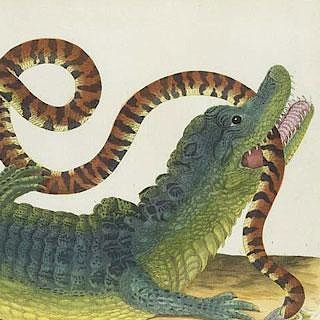Histoire des drogues, espiceries, et de cartains médicamens simples, qui naissent e's Indes & en l' Amérique, devisé en de
Lot 781
Categories
Estimate:
$800 - $1,600
Absentee vs Live bid
Two ways to bid:
- Leave a max absentee bid and the platform will bid on your behalf up to your maximum bid during the live auction.
- Bid live during the auction and your bids will be submitted real-time to the auctioneer.
Bid Increments
| Price | Bid Increment |
|---|---|
| $0 | $10 |
| $100 | $10 |
| $200 | $20 |
| $300 | $30 |
| $420 | $30 |
| $480 | $20 |
| $500 | $50 |
| $2,000 | $200 |
| $3,200 | $300 |
About Auction
By Jeschke Jádi Auctions Berlin GmbH
Dec 9, 2016 - Dec 10, 2016
Set Reminder
2016-12-09 06:00:00
2016-12-10 06:00:00
America/New_York
Bidsquare
Bidsquare : Rare Books Decorative Prints Historical Photography
https://www.bidsquare.com/auctions/jeschke-van-vliet/rare-books-decorative-prints-historical-photography-1998
Jeschke Jádi Auctions Berlin GmbH info@jvv-berlin.de
Jeschke Jádi Auctions Berlin GmbH info@jvv-berlin.de
- Lot Description
Histoire des drogues, espiceries, et de cartains médicamens simples, qui naissent e's Indes & en l' Amérique, devisé en deux parties. La premiere comprise en quatre livres: les deux premiers de M. Garcie du Iardin, le troisiesme de M. Chriszophle de la Coste, & le quatriesme de l'Histoire du Baulme adioustée de nouveau en ceste seconde edition: ou il est prouvé, que nous avons le vray Baulme d'Arabie, contre l'opinion des anciens & modernes. - Le seconde composée de deux livres de maistre Nicolas Monard, traictant de ce qui nous est apporté de l'Amerique. Le tout fidellement translaté en Francois, apr Antoine Colin ... Seconde edition reveue & augmentée.Mit 165 Textholzschnitten. Lyon, aux depens de Jean Pillehotte, 1619. Pgt. d. Zt. mit hs. RTitel (fleckig, VDeckel mit kl. Fehlstelle). Erste franzoesische Ausgabe. - Enthaelt: I. Orta, Garcia da. Histoire des drogues, espisceries, et de certains médicamens simples, qui naissent e's Indes & en l'Amérique. Mit 64 Textholzschnitten. 8 nn. Bll., 369 S., 7 Bll. - Vgl. Nissen, BBI 983 u. Hunt 120 (Ausg. Antwerpen 1567 ff (lat.) u. Goa 1563 (port.)) - Pritzel 4316 Anm. (diese Ausgabe) - "Garcia da Orta (ca. 1500 - Goa ca. 1568), botany, pharmacology, tropical medicine, anthropology. Among the Portuguese voyagers and travelers in Asia, d'Orta was the first to use his position to add the knowledge in Europe of South Asian flora ... 'Coloquios dos simples e drogas he cousas medicinais da India' (Goa 1563) ... described the size and form of the plant, its leaves, flowers, and fruit, what parts were used, the methods of cultivation and preparation, and the exact location where each plant was grown ... Besides the plants, drugs and diseases he found in India, d'Orta was greatly interested in Indian sociology. He described the caste system, the Parsee religion, and the social role of such practices as betel chewing and the consumption of bangue (cannabis)" (DSB 10, 236 ff). - II. Acosta, Christobal. Traicté de Christophe de la Coste, médicin et chirurgien. Des drogues & médicamens qui naissent aux Indes. Servant beaucoup pour l'esclaircissement & intelligence de ce que Garcie du Iardin a escrit sur ce subject ... Mit 55 Textholzschnitten. 176 S., 3 nn. Bll., 1 w. Bl. - Pritzel 14. - nicht bei Nissen. - Vgl. Hunt 130 (1578, port.) u. 139 (1582, lat.). - "Christobal Acosta (ca. 1525 - ca. 1594), natural history, medicine ... Acosta's 'Tractado de las drogas, y medicinas de las Indias orientales' was written in a fluid and concise style. It offers systematic, firsthand observations of the Oriental drugs and his own accurate drawings. This book clearly surpasses that of d'Orta, whose contributions Acosta readily acknowledges" (DSB I, 47). - III. Alpini, Prospero. Histoire du Baulme: ou il est prouvé que nous avons vraye cognoissance de la plante qui produict le Baulme, & par conséquent de son fruict, & de son bois ... Mit 3 Textholzsachnitten. 102 S., 4 nn. Bll., 1 w. Bl. - Erste franz. Ausgabe. - Vgl. Nissen 20 u. Hunt 164 (Venedig 1592, lat.). - Pritzel 114. - "Alpini (1553 - 1616) was among the first of the Italian physician-botanist of the sixteenth century to examine plants outside of their therapeutic uses ... Another product of Alpini's study of Egyptian plants is the 'De balsamo dialogus' (1591)" (DSB I, 124). - IV. Monardes, Nicolas. Histoire des simples médicamens apportés de l'Amerique, desquels on se sert en la Médecine. Mit 43 Textholzschnitten. 262 S., 3 Bll. - Nicht bei Nissen. - Pritzel 6366 Anm. - Vgl. Hunt 118 (Antw, 1574 (lat.). - Sabin 49948. - "Nicolas Monardes (ca. 1493 - 1588) ... had to learn about American drugs at Seville docks. Monardes was the best-known and most widely read Spanish physician in Europe in the sixteenth century ... and because of his careful descriptions on drugs and the test he carried out in animals to ascertain their medicinal properties, he is considered one of the founders of pharmacognosy and experimental pharmacology" (DSB 9, 466). - Bis auf Alpini sind die Texte aus den Muttersprachen in Charles de L'Escluses 'Exoticorum libri decem' von 1605 auf Latein erschienen, teilweise sind sie von Colin um Anmerkungen vermehrt und einige Illustrationen vermehrt. - Exlibris, Vorsatz laediert, nach hinten abnehmend feuchtrandig, anfangs bis S. 100 im Feuchtrand braunfleckig, Bindung etw. gelockert, vereinzelt Wurmgaenge im weißen Rand.
- Buyer's Premium



 EUR
EUR CAD
CAD AUD
AUD GBP
GBP MXN
MXN HKD
HKD CNY
CNY MYR
MYR SEK
SEK SGD
SGD CHF
CHF THB
THB











